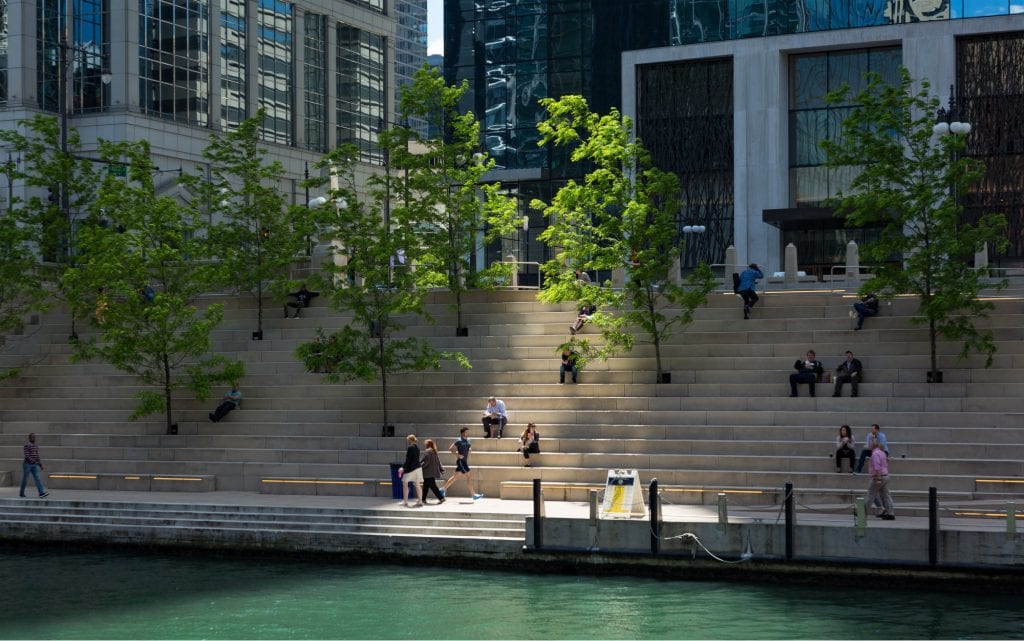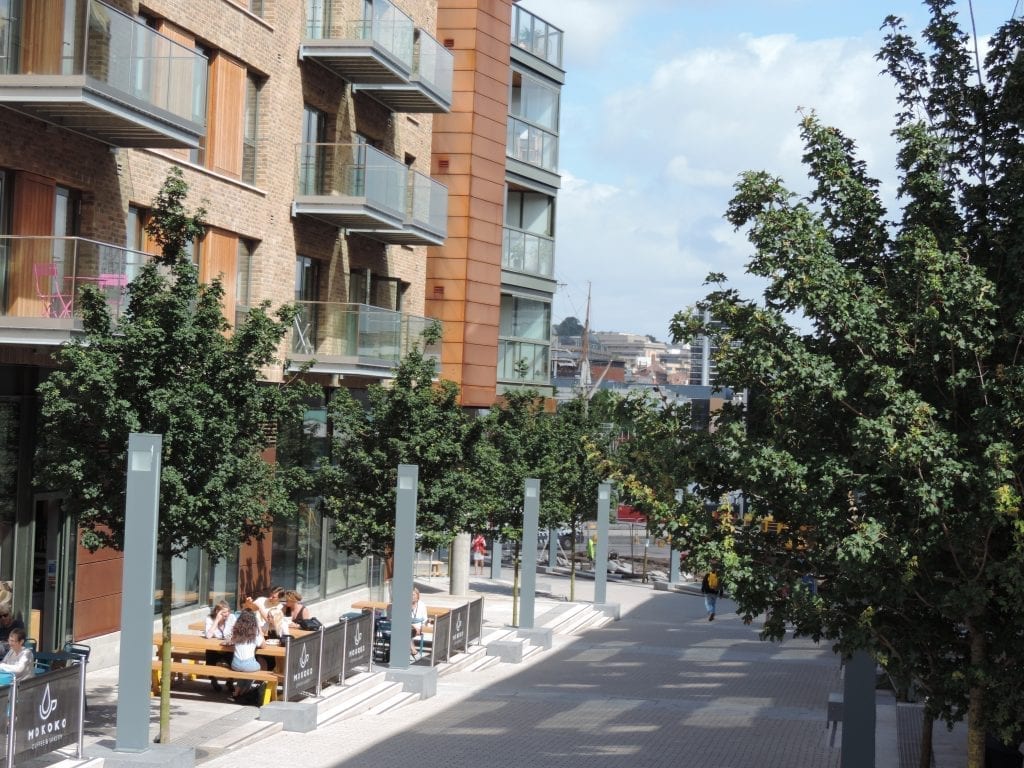Former mayor of Chicago Richard Daley once delivered a keynote speech at the Great Parks/Great Cities Conference, in which he stated that “trees are contagious and when people experience them, they want more of them and they’re willing to pay for them because they know they’re getting something for their money.”
“Trees are contagious and when people experience them, they want more of them”
– Richard Daley, Former Mayor of Chicago

So, if people are willing to pay substantially more to visit an area with large trees than an area with few trees (Daley, 2001), it’s no wonder why the City of Chicago invests millions of dollars each year into their Greenstreets / Green Alley program, which (amongst other green infrastructure initiatives) provides funding for healthy urban tree planting projects across the city. In fact, the below findings have been made regarding what people determine mature trees in cities are worth:
- $1.60 (£1.20) per person more for a visit to a site that was “mostly treed with some open grassy areas under trees” than for a site with “mowed grass and very few trees anywhere”
- $0.99 (£0.75) per person more for a “mowed grass area with scattered trees and some dense woods”
- $0.21 (£0.16) per person more for a visit to an area with “mowed grass, scattered trees, and no woods”
Although it’s not surprising that there is a willingness to pay more for treed areas over non-treed areas, it is interesting that the more treed / forested an area was, the more visitors were willing to pay. And while there were other elements varied across all types of areas that affected determinations, trees and forests always ranked higher than open spaces, bare terrain, children’s playgrounds, and athletic fields (Dwyer et al, 1989).

As an example of the attributed income associated with treed areas, more than 2.5 million people visit the Ned Brown Forest Preserve, located north-west of Chicago, each year. It has been estimated that $1 (£.0.75) per visit can be attributed to the Forest Preserve’s vegetation – a mixture of scattered trees and forests with mown grass. This would equate to $2.5 (£1.87) million per year.
In Chicago, you’ll see trees, shrubs, and flowers in the street medians – not just downtown, but in the suburbs as well. This is a result of the city’s landscape ordinance, which requires developers of everything from office buildings to parking lots to install (and maintain) landscape elements around their property and on the public right-of-way. And the more mature the trees, the greater the results.
Trees can soften the rough edges of a city, calm your nerves and make you feel a little more in control of things
As Richard Daley put it in the same address of July 2001, “trees, a small park, or even a sidewalk bench can soften the rough edges of a city, calm your nerves and make you feel a little more in control of things”. He finished his speech by saying that the City of Chicago “believes that their efforts to make the city more attractive and livable are generating a big return on investment. That return can’t always be measured in dollars and cents, but in community pride, spirit and confidence”. Healthy urban trees play an important part of this for Chicago, and they can do for your community as well.
How do we get large mature trees in dense urban areas?
Trees, whether they’re in a busy city or a woodland forest, need four basic things to mature, and three additional considerations when we put them in urban areas.
1) Soil Volume
The number one thing that trees need is soil – and that means healthy uncompacted soil that will provide space for roots to grow, not compacted soil and/or construction debris. And not just any amount – if we want trees to thrive and mature, they need lots of it. Meaning that the regularly practiced method of providing only the soil within the pavement opening commits the tree to a premature death or a lifetime of infrastructure damage and costly repairs. Click here to learn more about determining how much soil volume a tree needs.
2) Irrigation
Lack of water and nutrients are the single largest cause of death in newly planted trees – and this is only compounded in urban areas where impermeable hardscape surfaces prevent water and air from penetrating the soil below. It is essential to incorporate the means to efficiently irrigate a tree pit – especially in the critical first three years.
3) Aeration
Less commonly recognized than irrigation but equally as important is aeration. Soil and roots need oxygen to live. If the root plate of the tree is covered by impervious paving, like most street trees are, vital gaseous exchange in the root zone cannot take place. Appropriate tree pit design should include a means of facilitating air supply below the surface.
4) Drainage
Waterlogged tree pits can become anaerobic and lead to the death of trees. It is essential to ensure that potential drainage issues are addressed early on in your planting scheme.
In addition to the four basic necessities above that all trees need, trees in hardscape urban areas need a few more considerations…
5) Root Management
Any tree planting near paved surfaces or utilities should have appropriate root management specified. Depending on what needs to be protected and where it is in relation to the tree, different root management solutions are available. Continuous paved surfaces for example, require roots to be managed downwards at least 12″ (300mm) to reduce the risk of pavement heave and other surface root damage.
6) Support
It’s important to ensure urban trees are securely supported. Underground guying is widely preferred for urban environments because it is unobtrusive. Staking and tying are alternatives, but these require ongoing maintenance and when not properly cared for becomes a detriment to the tree.
7) Protection
Depending on the environment the tree will be planted in, above ground protection from carelessness and/or gratuitous vandalism can become critical to tree survival. A decision will need to be made whether there is a need for tree grates, vertical guards, and other protective measures.
